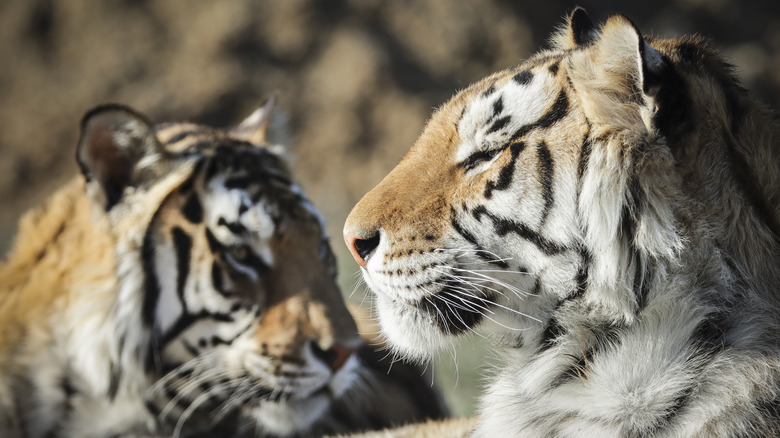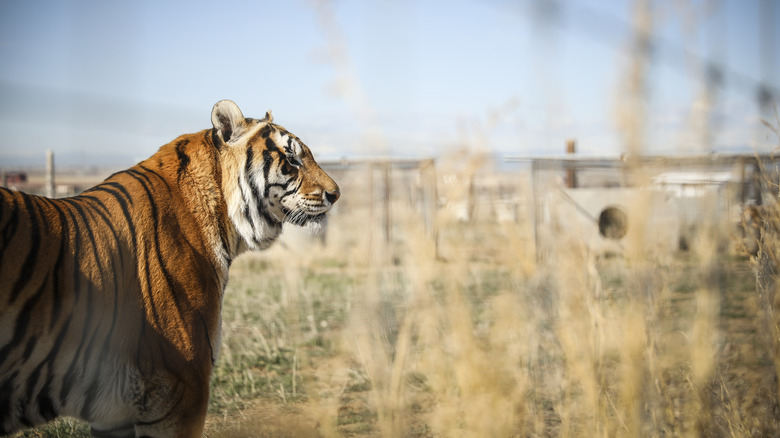How Many Animals Were Rescued From Joe Exotic's 'Zoo Of Horrors?'
After two decades as head of the Greater Wynnewood Exotic Animal Park, Joe Exotic was arrested for attempting to kill Carole Baskin through hired hitmen, as well as for several accusations of animal abuse. According to Daily Mail, park zookeeper Eric Cowie claimed that Exotic euthanized "over 100" of the facility's cats in order to make room for new animals. In addition to this horrific mortality rate, daily life for the animals often allegedly consisted of assault — from each other as well as from Exotic himself.
After prematurely separating newborn cubs from their mothers, Exotic allegedly struck them for supposed misbehavior, often had them declawed to make them safer for public handling, allowed them to starve, and left them to suffer through illness (via Harper's Bazaar). When he was arrested, 68 big cats were present within his park (via ABC News). Among these were not only tigers and lions but multiple hybrids which even outnumbered the park's pure lion population.
Joe Exotic had over 1,000 animals
Big cats were not the only animals to fall under Joe Exotic's ownership. Around 1,000 other animals were housed at the park, many of which allegedly also faced injury and death through neglect and abuse by the often untrained staff (via Mirror). According to PETA, a wallaby was found dead from hypothermia, injured racehorses dumped at the park were killed or left to die before being used as meat for the animals, and live livestock animals were routinely fed to the cats. Nutrition itself was also a constant issue as food and water were seldom provided insufficient or consistent quantities (via Tampa Bay Times).
Exotic's breeding program created many new animals, such as the previously mentioned hybrids. However many of these were severely impacted by the effects of inbreeding. Since animals like white tigers get their color from recessive genes, many animals were intentionally inbred in order to produce such rare conditions (via National Geographic). Many of the animals have since been relocated to zoos and rehabilitation centers in the surrounding area, according to the Denver Post.

